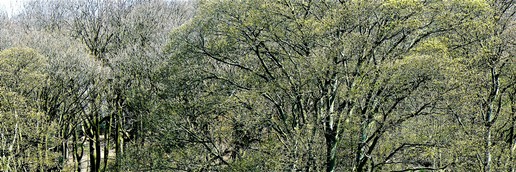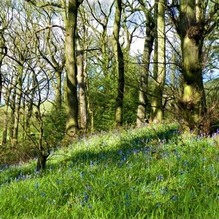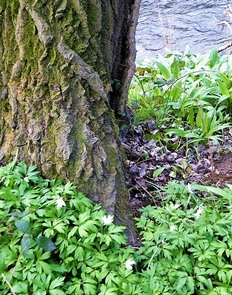

Biodiversity
Action
Plan

Local Priority Habitat
Lowland mixed deciduous woodland is a local priority habitat because of its national status, the plants, animals and birds it supports, and the opportunities for its conservation in Barnsley.
Lowland mixed deciduous wood-land is a national priority habitat
UKHab classification w1f
Phase 1 surveys class it as broadleaf woodland.
There are four main National Vegetation Classification (NVC) categories for this priority habitat in Barnsley:
W10 Oak-bracken-bramble on shale soils.
W16 Oak-birch-wavy hair grass on sandstone soils, and
W17 Oak-birch-bilberry in more open areas
W7 Alder-ash-flush on poorly-drained soils.
The best examples are
- Ancient woodland,
- Woodland with a good range of ancient woodland indicator or other notable plants, or
- Woodland that supports good populations of species of conservation importance, eg bats, birds, invertebrates.
Mixed Deciduous Woodland is the natural woodland cover for much of Barnsley, mainly mixed Oak-Birch woods with some stands of Ash. Its carpets of spring flowers are a breath-taking sight.
This broadleaved woodland shelters a range of birds feeding on flies and other invertebrates they find there as well as seeds and nuts during winter. Bats and mammals like Badger forage; and this woodland supports distinctive butterflies and moths.
The colourful spring displays include an abundance of Bluebell, Greater Stitchwort, Wood Sorrel and Honeysuckle as well as more occasional species like Yellow Archangel.
In damper areas Wood Anemone, Ransom, Lesser Celandine and Dog’s Mercury are more abundant; and species such as Opposite-leaved Golden Saxifrage are found.
The richest display of Bluebell and other spring flowers is found in the mixed Oak-Birch woods on the shale soils of slopes and valleys.
Most plants in broadleaf woodland come into life early and flower during the spring, giving a brief burst of intense colour before the trees come into leaf and the ground is shaded. Shade-tolerant species like Bracken and Bramble follow later.

Ancient woodland, known to have been present since 1600, has developed soils, fungi and plant communities not found elsewhere. Plants characteristic of ancient woodlands are known as Ancient Woodland Indicators.
Oak-Birch woods on steeper slopes or hill tops are less rich in spring flowers, but have Wavy Hair Grass, Bracken, and then Bilberry and Heather in open areas.
Sessile Oak and Downy Birch are found in Mixed Deciduous Woodland as well as the more common Pedunculate Oak and Silver Birch. Ash and Alder occur on less well-drained soils near springs, flushes and streams or other damper sites.
Beech, Sweet Chestnut and some non-native conifers have been widely planted in many of these woodlands with Sycamore being common.
Hazel, Hawthorn, Holly, Elder and some Rowan are found in the understorey.
For more information on mixed deciduous woodland follow these links:


Mixed Deciduous Woodland